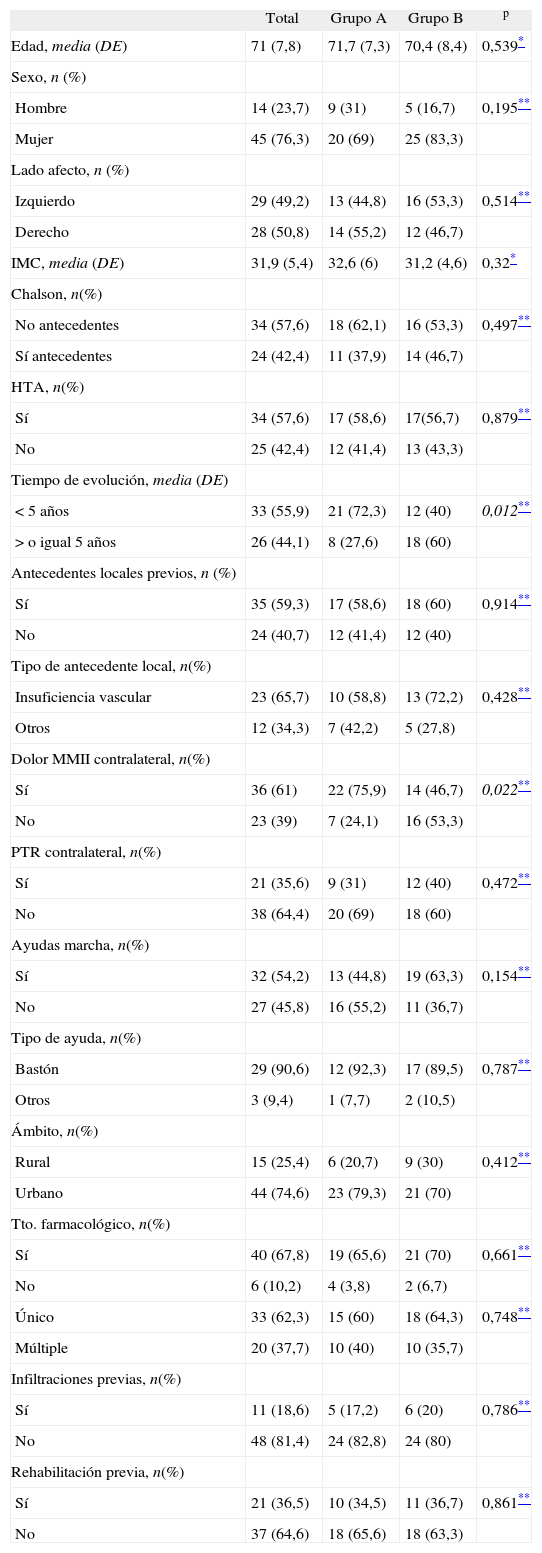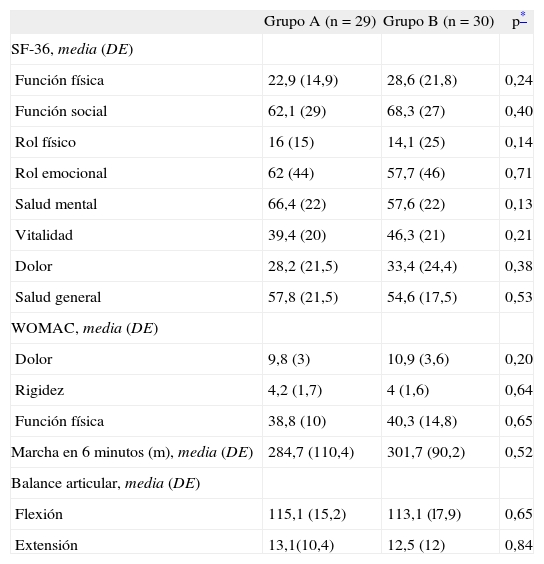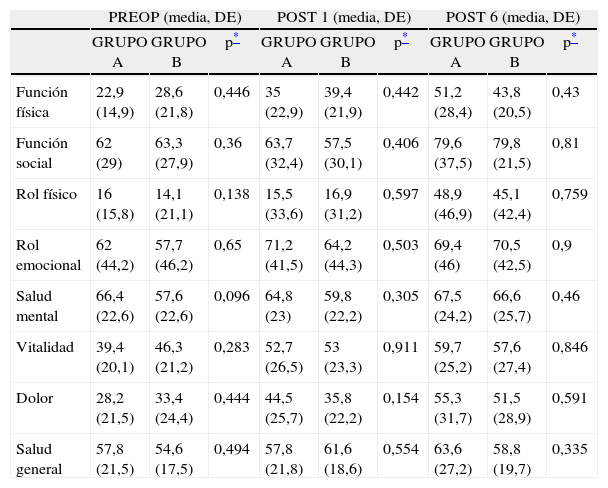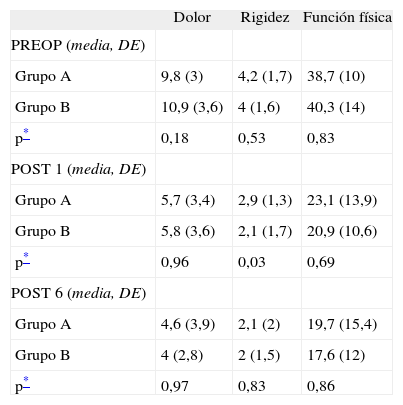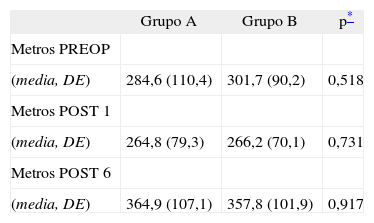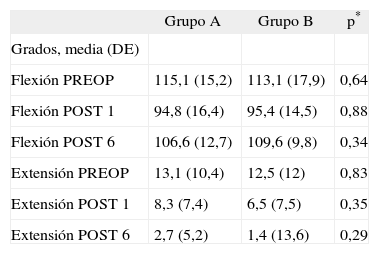Se valora la eficacia de un programa de rehabilitación de artroplastia de rodilla, que incluye educación preoperatoria y una mayor frecuencia en las sesiones de tratamiento, comparándolo con un tratamiento menos frecuente y sin educación previa.
Pacientes y métodoSe realizó un ensayo clínico aleatorizado doble ciego en 64 pacientes intervenidos de prótesis total de rodilla durante el período 2004-2005. Los pacientes se visitaron las 2-3 semanas previas a la intervención y se distribuyeron aleatoriamente en grupo A (tratamiento preoperatorio, n=29), o grupo B (protocolo habitual, n=30). El grupo A realizó educación y cinesiterapia pre y postoperatoria que se continúó en régimen ambulatorio diario durante un mes. El grupo B realizó cinesiterapia postoperatoria. Se valoraron los resultados mediante la escala de WOMAC, el test de marcha en 6 minutos, el cuestionario de salud SF-36 y el balance articular previo a la intervención, al mes y a los 6 meses postcirugía.
ResultadosNo se observaron diferencias significativas entre ambos grupos en el WOMAC, SF-36, marcha en 6 minutos y balance articular al mes y a los 6 meses. Los pacientes del grupo A realizaron de forma significativa más sesiones de tratamiento (3,9), aunque invirtieron menos días en completarlo (10,2), diferencia que se incrementa si se suman las tres sesiones de formación previa.
DiscusiónNo existen diferencias entre ambos grupos salvo en el número de sesiones realizadas. Los resultados obtenidos son similares a los encontrados en la literatura. Las diferencias no justifican la aplicación de este programa de formación previa e intensivo por el mayor coste.
The effectiveness of a rehabilitation program in total knee arthroplasty that includes pre-surgery education and a greater frequency in the treatment sessions is evaluated and compared with a less frequent treatment without previous education.
Patients and methodA randomized double blind clinical test in 64 patients operated on for total knee arthroplasty during 2004-2005 years was conducted. The patients were evaluated 2-3 weeks pre-surgery and distributed randomly into group A (pre-surgery treatment, n = 29), and group B (no pre-surgery treatment, n = 30). Group A underwent education and post-surgery education and physical therapy and continued in daily outpatient treatment for one month. Group B only had post-surgery therapy three days per week. The results were evaluated with the WOMAC scale, the 6-Minutes Walk test, the SF-36 health questionnaire and the joint balance test prior to surgery, at one month and at six months post-surgery.
ResultsNo significant differences were observed in both groups in the WOMAC, SF-36, 6-Minutes Walk test and joint balance at one month and six months. Group A patients had significantly more treatment (3.9), although they spent fewer days to complete it (10.2), a difference that increases if the three sessions of previous formation are added.
DiscussionThe results are similar to those of other works and a program of pre-surgery education does not contribute to any benefit to the patient. The results obtained do not justify the cost differences caused by the greater number of sessions of program A, with previous training.







